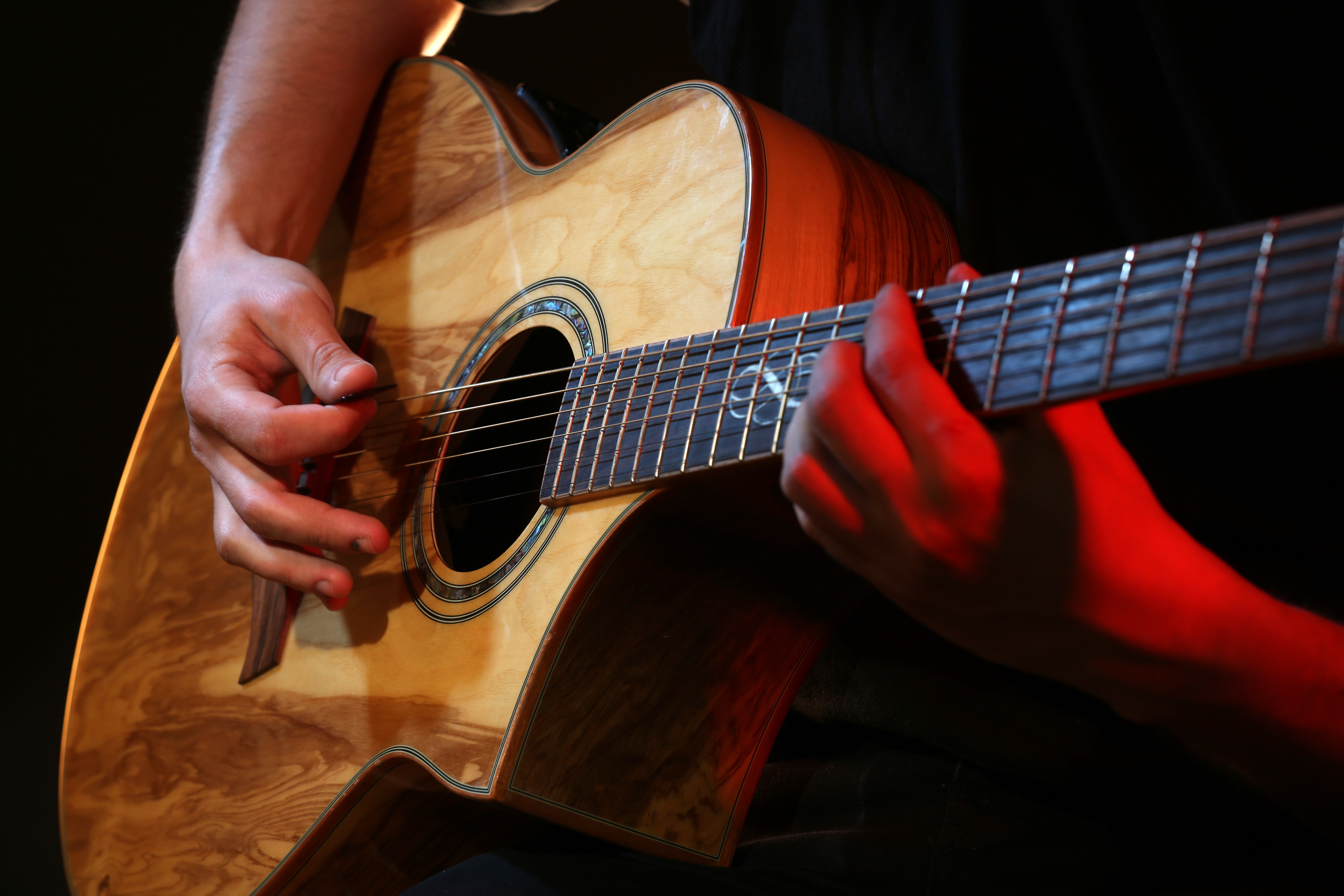
Why Solo Guitar?
To play the guitar--or any instrument--unaccompanied opens up a world of opportunities from gigs and concerts to simply being able to satisfy one’s own need to play without requiring a band.
In the gigging world, to be able to play unaccompanied is very inviting to venues. It is highly effective to have solo guitar as background music in a cafe or at a classy bar and is always more practical in terms of cost for the venue. One major field that solo guitarists tend to excel in is weddings. The guitar makes for a great solo instrument at a wedding, whether you are playing the couple down the aisle or just giving background music at the reception, many musicians, particularly classical guitarists, make their living solely performing at weddings and similar functions--so this is a very valuable path to follow. The repertoire for these performances typically consists of either simple classical guitar pieces such as those by Bach, Beethoven, or arrangements of popular tunes like the Beatles. Another wonderful use for solo guitar is busking. Busking is a wonderful way to test your skills in public, the pressure is taken off and leaves you in a great position to try out new arrangements and practice them in a performance situation.
How does the Guitar Work as a Solo Instrument?
In contrast to the guitar, the piano is often thought of as the ultimate solo instrument. It has a huge range, a sustain pedal, and as a result, is capable of performing full orchestral pieces and not missing a note. Unfortunately, the guitar does not hold this huge advantage. The guitar, of course, has six strings, meaning no matter what, only six notes can be played at any one time. This means that certain chords simply will need to have notes left out, which notes are left out is determined by the arranger of the piece. When arranging music for guitar, it is important to understand what notes are vital and what notes can be omitted--all of which can be learnt through music theory and chord knowledge. In addition to having only six strings, most of us only have four fingers available to fret the instrument which can be extremely limiting and quite often these fingers may not stretch as far as we would like. Finally, the guitars biggest envy of the piano is the sustain pedal. Once a note is played it can only be held as long as your finger stays put on the string. For example, if I play a G chord then want to play a melody, I need to remember that as soon as my fingers leave the chord, the chord stops sounding. This means we need to arrange our fingers in a way that we can play the chord and the melody at the same time.
Although the guitar may seem ridiculously difficult to play something that could be easily played on a piano, the guitar is extremely valuable as a solo instrument. In addition to being much more portable than a piano, the timbre of the guitar is one of the most versatile of all instruments. Just from listening to the examples below, you can hear how different each musician is and how many different the sounds they get from the guitar. The tone of the solo guitar can be altered in many ways. The acoustic guitar can be picked with so much variation you can create brittle, twangy notes, or very mellow, warm notes with just the position of your hand. Here is an interesting interview of Andres Segovia talking about the versatility and tonal quality of the classical guitar.
As well as having picking as a tonal application, a world of sound opens up when the electric guitar is used, you can hear Chet Atkins using an bright sounding electric guitar and of course Joes Pass using a warm, jazzy electric guitar. Different sounds lend themselves well to different arrangements.
Great Solo Guitarists
1. Chet Atkins
Atkins was one of the biggest pioneers of virtuosic solo guitar in the 20th century. His style involved creating a country-style rhythm and then simultaneously playing a melody on top. This style takes careful arrangement as it needs a lot of intricate coordination between fingers, both left and right.
Learn with LPM
If you are looking to feel comfortable with playing basic major and minor chords, power chords, and apply different strumming techniques to your practices with Ze, check out his course called Rhythm Guitar
2. Andres Segovia
When anyone thinks of classical guitar, Segovia is on top of the list. Classical guitar lends itself very well as a solo instrument, you could say this is because of the huge amount of pre-arranged pieces and soft tone of the nylon strings create a very beautiful sound. When Segovia plays, he approaches the music with so much passion and respect for the music. Even for non-classical guitarists, we can learn so much by simply watching him play.
3. Joe Pass
Joe Pass is one of the great jazz guitarists of the 20th century. He is known for his solo guitar playing and accompanying. Pass had unfathomable control over the guitar, his chord work was so precise and intricate, it almost seems as if it is being played on the piano. His style involved playing jazz standards as chord solos--playing the melody with the chords and interweaving different lines and counterpoint.
4. Tommy Emmanuel
This Australian guitar legend is possibly the most famous acoustic guitarist today. Tommy talks about Chet Atkins being one of his biggest influences and it really shows. His use of the thumb pick and his lightning fast lines puts him up us as a highly respected musician. Emmanuel is famous for his take on “Classical Gas” and “Over the Rainbow.”
5. Martin Taylor
Martin is a solo guitar virtuoso known for his incredible dexterity and arrangements that mimic the sound of a full band. Taylor would play basslines, comp, and play the melody all at the same time! Just watching his fingers too closely may give you a headache, but when you sit back and listen to what he produces, it’s easy to see how he has become one the world's greatest solo guitarists.
What do we need to know
To be a confident solo guitarist, it is important to have an understanding of both chords and scales as these two things will need to be brought together to enable us to play unaccompanied. The scale will hold the melody of the song--imitating the singers’ role and giving the audience something to relate to. The chords will hold the accompaniment which is the typical role of a piano player or guitarist. In the next lesson, we will learn about the key of C, all the chords and scale within this key, and how to blend these two vital pieces of information together to start creating solo guitar pieces.
More About the Teacher
Rowan Pattison is an Australian jazz and contemporary guitarist. His resumé boasts artists such as American singer Bobby Arvon (Happy Days), Broadway star Michelle Murlin, American Idol finalist Lou Gazzara, Marcus Terrel from America’s Got Talent, Vegas Trumpet prodigy Greg Bohnam and American Comedian James Stevens III, who is featured regularly on The Tonight Show and Comedy Central. Now based in Melbourne, Rowan has just lead his own trio concert Impressionism of Bill Evans on a tour of Europe playing concerts in Kyiv, Lviv, Krakow and Paris. Rowan's guitar courses with Liberty Park Music include the Introduction to Jazz Improvisation and Introduction to Solo Guitar.



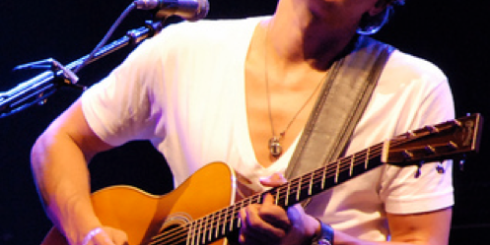
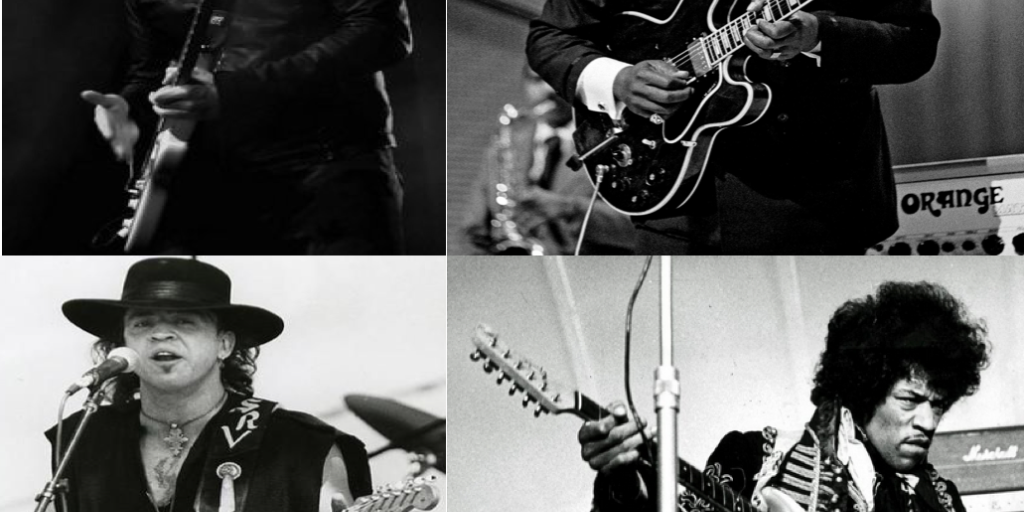
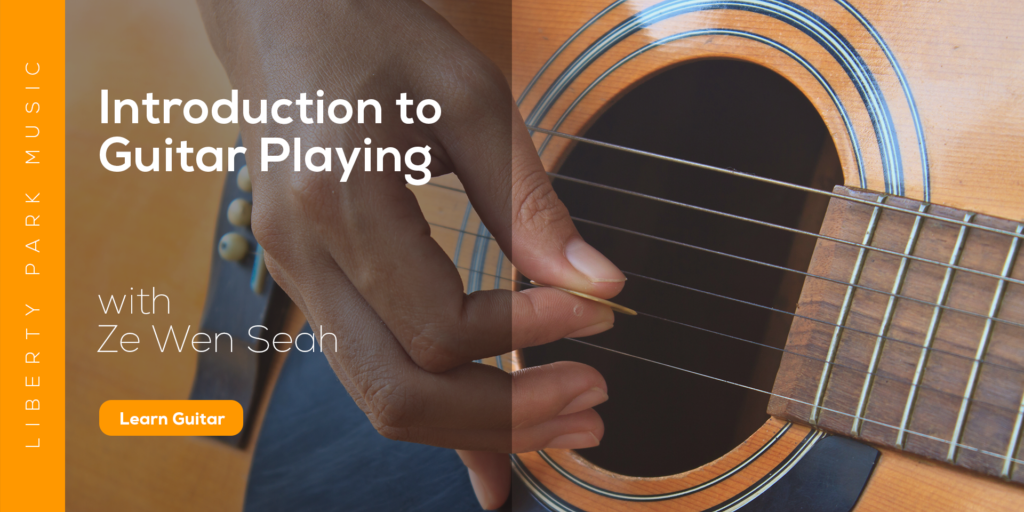
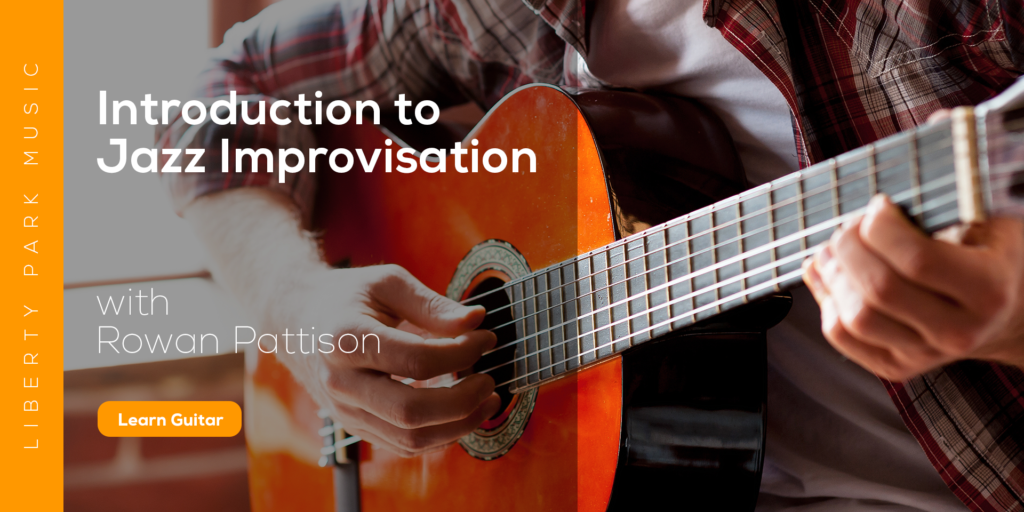
Hello Rowan! Thank you for sharing a very informative blog with us. I have a guitar, but I have no idea how to use the guitar in the musical world. Through your blog, I got tips and tricks for the use of guitar in the musical world. Thanks and keep blogging!